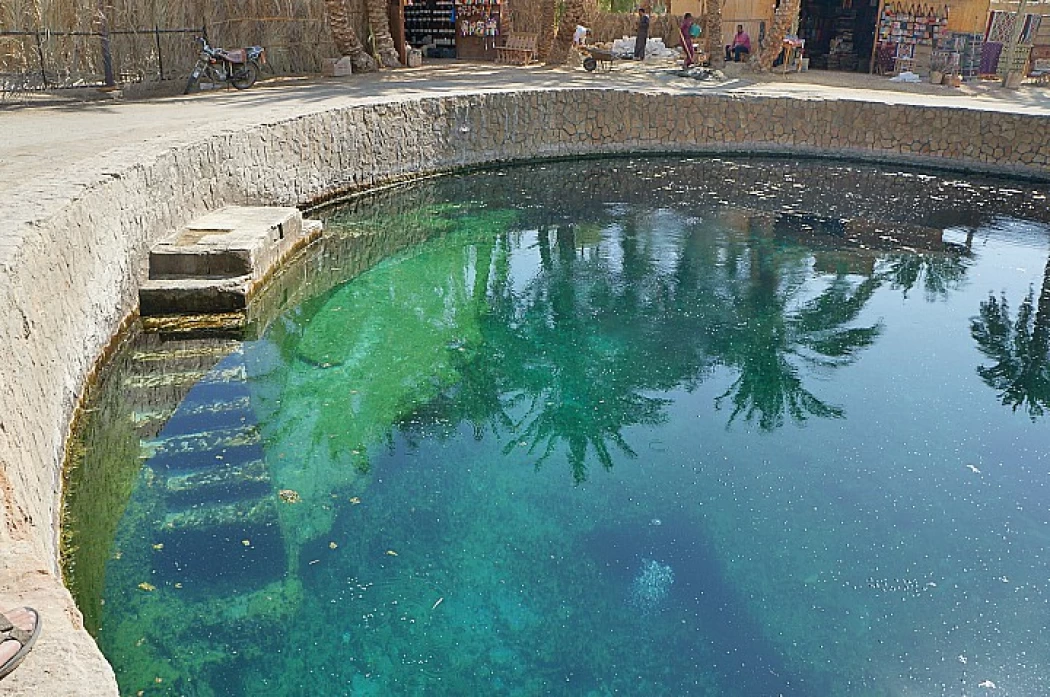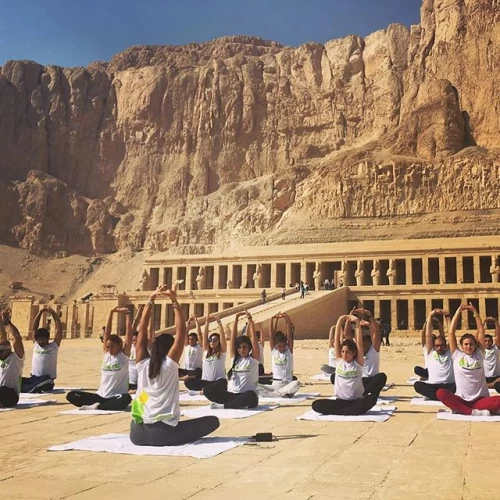
Siwa Oasis: Pure, Phosphate-Free Water
While Egypt's villages and cities suffer from a shortage of drinking water, some areas have a lot of pure water, free from pollution, phosphates, or dead animals ... One of these areas is the Siwa Oasis, which contains the purest water in the world. Siwa Oasis is one of the best areas in Egypt where you will find natural water wells. We export a large amount of this water outside Egypt. There are dozens of freshwater wells including large, huge wells, and small wells in Siwa Oasis. Egypt Travel Packages often include trips to Siwa Oasis for its pristine water and unique landscapes. Siwa is the mouth of the Egyptian Nubian Reservoir, the largest underground water reservoir in Egypt, which originates from Nubia and Aswan and passes through desert areas and small oases. Egypt Day Tours to Siwa allow travelers to experience the oasis's exceptional water resources and stunning desert beauty. The oasis is famous for investing in the groundwater sector, and natural water factories have been implemented, including Siwa Water Factory, Hayat Water Factory, Aqua Siwa, Safi, and Aman Siwa Water.
Water wells are not limited to drinking only, but their use in Siwa is multipurpose, as they are used for drinking, agriculture, and tourism for large wells such as Ain Cleopatra and Ain Rajwa to which tourist trips are organized. Egypt Shore Excursions from nearby ports also offer visits to these famous water sites. The government prevents the construction and drilling of new wells in the oasis due to the issue of agricultural drainage and the high level of water underground, where water is found 30 centimeters deep from the surface of the earth due to the proliferation of wells and the drilling of random wells. The Ministry of Irrigation and Water Resources is fighting the drilling of new wells, which has been banned except by instructions from the Ministry of Irrigation according to needs, and according to certain specifications regulated by the Groundwater Authority. There are dozens of wells in the oasis, including ancient Roman wells that have existed for hundreds of years, such as Ain Cleopatra, and new deep wells, which were drilled in the early 1990s and have a depth of nearly 1,000 cubic meters, says Haj Ibrahim Saleh Mohammed, a tribal elder from Siwa. In addition to the third type of wells, which are random wells dug by agricultural land reclamationists for the purpose of farming, he explained that all water from these wells is pure.
For his part, Salama Mohammed, a Siwa resident, said that there are healing water wells that people in Siwa go to for treatment, especially for children's skin diseases, and the child bathes in it three times, with positive and excellent results. Sayed Haboun, sales manager at a mineral water factory, says that Siwa Oasis is blessed with natural pure water, and is exported to some Arab and European countries according to market demand, in addition to the demand of a large segment of society to drink mineral water. This natural resource adds a unique touch to Egypt Tours packages from USA, making it a favored destination for tourists looking to experience authentic Egyptian landscapes and culture.
Egypt is known for its cities, mineral and sulfur water, dry, moisture-free weather, and soil of sand and silt, which is proper for treating numerous diseases, especially skin diseases and any disease marked by inflammation and pain in the joints, muscles, or fibrous tissue, especially rheumatoid arthritis. Due to its distinctive natural properties, Egypt has a multiplicity of beaches and seas. Many sulfur and mineral eyes are spread in Egypt.
Famed for its deserts and ancient wonders, have you heard about Egypt's natural water springs that induce relaxation and healing and wow with fabulous views? If you're interested in complete seclusion, soaking in warm mineral water, and an adventure in the desert, here are some of the best natural water springs in Egypt that are worth a visit.
This natural water also contains several mineral salts and some minerals of therapeutic value such as sodium carbonate and varying proportions of some metal elements. It is like magnesium and iron, and it is distinguished by its depth, amplitude, and temperature which ranges between 30 and 70 degrees Celsius.
Laboratory analyses have shown the proportion of salinity in these natural water resources for hospitalization, in addition to the availability of silt in the bottoms of these sulfur-water springs with its therapeutic properties that cure many bone diseases, diseases of the digestive system, respiratory system, skin diseases, etc. It has also been proven that it is very beneficial in the case of treating arthritis patients by burial in the sand. It has passed through and produced economically in recent years, within the framework of strict scientific control on quality and standard specifications.
The number of natural eyes in Egypt is 1450 eyes, fountains, and wells that spread throughout Egypt east and west, some of which are found in the Western Desert by entering oases and marine oases, including what is found in Cairo like the Helwan eyes group and Ain Sirah, some of which are in the Eastern Desert, some of which are in Sinai such as Pharaoh's spring and Moses water spring are among the features of medical tourism in Egypt.
Many natural water springs spread throughout Egypt, the most important of which is Siwa Oasis, which lies to the west of Marsa Matrouh by about 300 km. It occupies the forefront position among the optimal places for medical tourism and natural hospitalization in Egypt and is characterized by charming poetic calm, air purity, the purity of the sky, and mild temperature, which can be visited with Cairo Top Tours by booking Egypt day tours.
About 180 kilometers from Hammam Musa, there is a mountain cave in the city of Abu Zenima from which extremely hot sulfur springs erupt, with temperatures ranging between 55 and 75 degrees Celsius, reaching the boiling point.
The sulfur springs in Abu Zenima are known as «Pharaoh's Bath» and their hot water flows into the sea without benefiting from it. However, some tourism companies obtained approvals to exploit the area and transform it into a tourist and therapeutic resort, and began constructing concrete structures, but they were not completed.
Musa Baths are characterized by a temperature of 37 degrees throughout the year and their water is rich in sodium and magnesium. It is located in South Sinai, one of the most famous medical tourism places in the governorate.
Hammam Musa is located 5 kilometers from Tur Sinai –the capital of the governorate - surrounded by many palm trees, and has sulfurous waters with multiple mineral elements.
It is noteworthy that the sodium found in the water of Hammam Musa helps speed up wound healing, while magnesium helps the color cells in the skin regain their vitality, to restore the natural color of the skin, and has a strong effect on treating various skin diseases such as vitiligo, psoriasis, and skin tags.















